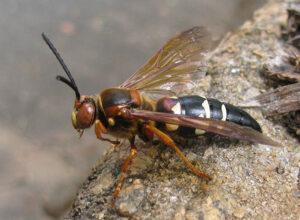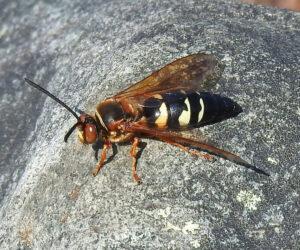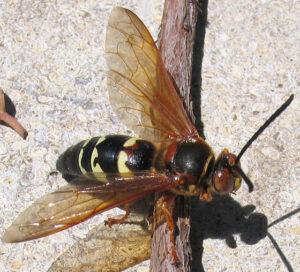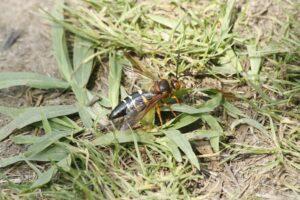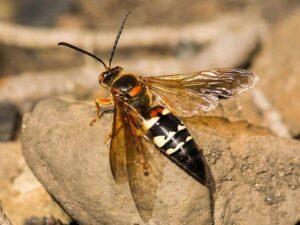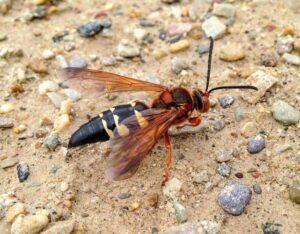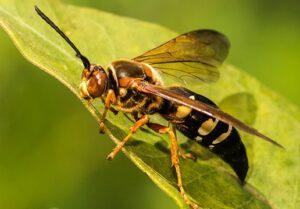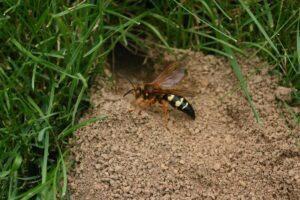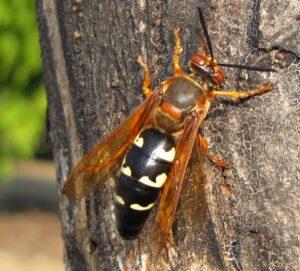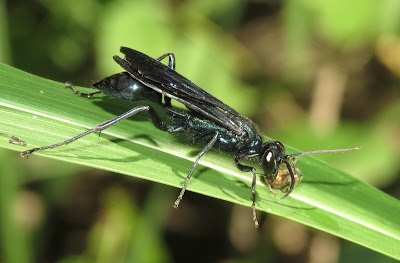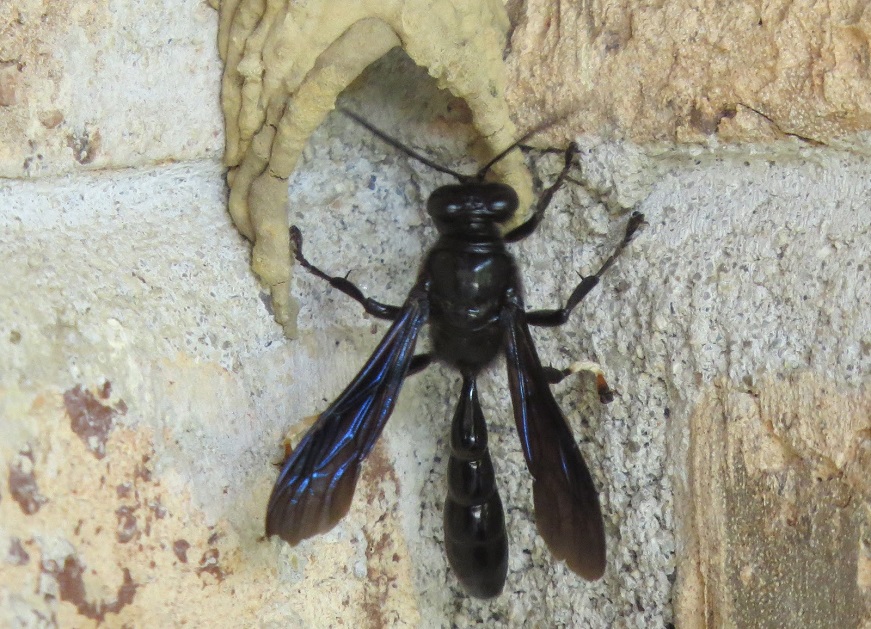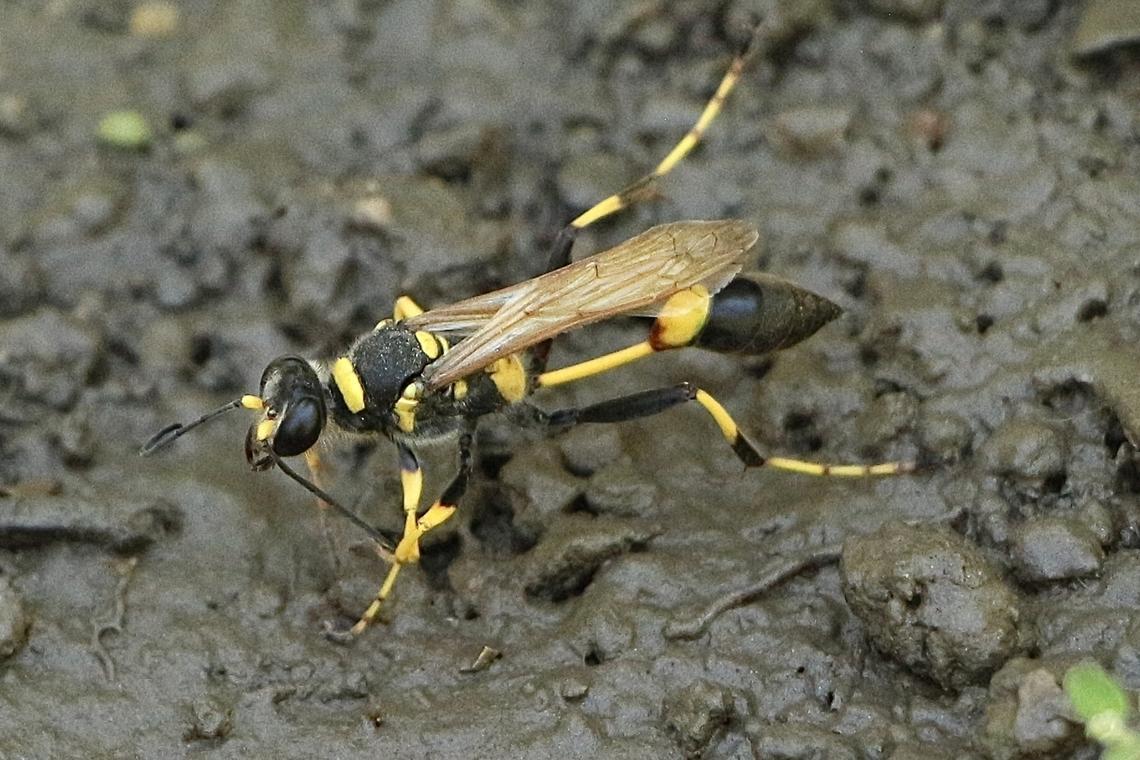Eastern Cicada Killer (Sphecius speciosus)
Updated on
17/11/2022The cicada killer or cicada hawk is also called the eastern cicada killer to distinguish it from other types of cicada killer wasps like the western, Caribbean, spectacled, and Pacific cicada killers. It is the most common of the other types of cicada killers.
As the name suggests, the big, solitary digger wasp hunts cicadas to provide food for its larvae. Thus they keep cicada populations in check and directly benefit the deciduous trees on which their prey feed. It is among the biggest wasps in the eastern US, giving them a formidable appearance.
Scientific Classification
- Class:Insecta
- Order:Hymenoptera
- Family:Crabronidae
- Genus:Sphecius
- Species:S. speciosus
Conservation Status
Description
The size of this robust cicada killer is 0.6-2.0 in (1.5-5.0 cm). The body color is black, and there are hairy, black, and reddish areas on the thorax. The abdominal segments are black to reddish brown with light yellow stripes, and the wings are brownish.
The females are mostly found skimming lawns seeking places where they can dig burrows, and looking for cicadas in taller shrubs and trees. They don’t sting unless threatened. Unlike the females, the males are aggressive and compete with other males for better breeding opportunities and to defend their territories. Though they lack stingers, they can jab with a sharp spine at their abdominal tips.
Despite their intimidating appearance and behavior, the cicada killer is not dangerous to humans.
Distribution: Eastern United States, east of the Rockies.
Habitat: Well-drained, sandy to loose clayey soils of grass-covered or bare berms, hills, banks, and adjoining areas of raised sidewalks, patio slabs, and driveways.
Do They Bite/Sting: Yes.
Lifespan: Around 3-4 months.
Predators: Velvet ant or cow-killer wasp.
Behavior and Characteristics
Diet
They feed on flower nectar and plant sap secretions.
Nest-building
The females carry the cicadas that they kill to a burrow for nesting. They can share a burrow where they dig their own nest cells in the main tunnel. Typically, a burrow is 10-20 in (25-50 cm) deep. They nest in window boxes, flower beds, planters, or under ground cover, shrubs, etc., mostly in locations in full sun with sparse vegetation.
Life Cycle
1. Egg Stage
The eggs are laid on cicadas brought into the burrow. The male eggs are laid on a single cicada, while female eggs are deposited on 2-3 cicadas. They hatch in 2-3 days.
2. Larva Stage
In the larval stage, the females are given more food as they make provisions for nest-building. So they attain larger sizes than the males. The larval development is complete in around 2 weeks. The mature larva undergoes overwintering in an earth-coated cocoon.
3. Pupa Stage
Spring sees pupation occurring in the nest cell. It lasts for 25-30 days.
4. Adult Stage
The adults come out in summer, around late June to early July, and die in September or October. The females catch cicadas by paralyzing them with their sting. There is only one generation in a year, and adults don’t overwinter.
Comparison with Similar Species
Asian Giant Hornet
The Asian giant hornet (Vespa mandarinia) has an orange head wider than its shoulders that contrasts against its dark brown thorax. The eastern cicada killer has a narrow head of the same color as its thorax. Plus, the former has dark orange stripes on its abdomen.
Western Cicada Killer
The western cicada killer (Sphecius grandis) has a reddish brown body, unlike the eastern cicada killer.
Source
lawnandpest.net, inaturalist.ca, bugguide.net, squarespace-cdn.com, mdc.mo.gov, arrownj.com, jcehrlich.com, lsuagcenter.com, 3.bp.blogspot.com




